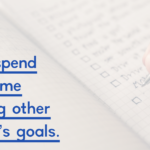I’ve noticed this year that students are not very good at conflict. It could be that they really had no one to interact with for a few years. It could be that they are not used to having to compromise with others. It could be that no one has ever challenged them or required them to experience difficulty and struggle.
Conflict can be hard. As someone who speaks with kids involved in conflict on a regular basis, I can assure you it is not easy. But while conflict is difficult, it is also a good thing.
We need students to embrace conflict. We as educators need to help students through conflict.
Try these strategies:
Bring back board games. In most board games, there is a winner, and several losers. Conflict is inherent. Students have to learn to play with others and accept when things don’t go their way. Teach winning with grace and accepting loss with grace too.
Teach conflicting viewpoints. Allow students to share a conflicting viewpoint if they disagree with a classmate. Encourage them to share their disagreement respectfully, and to accept that opposing viewpoints may exist.
Use a conflict resolution tool. At the most basic level, Rock, Paper, Scissors can be an excellent tool to help students settle basic conflict. (Think two students arguing over supplies.) We have used something called the Peace Path to guide students through several steps of conflict resolution. Whatever tool you encourage, show students that it is possible to resolve conflict peacefully.
Teach compromise. I’m not sure that students understand give and take. Young students may especially struggle to work with a classmate to resolve conflict. Teach compromise to help students understand the value of give and take.
Help students define and embrace ambiguity. Being able to resolve conflict sometimes involves being able to embrace ambiguity. This can be a difficult skill for students to master or even understand. Define the term for students, and introduce situations where they may not be able to come up with an answer. Help students to embrace ambiguity.
Conflict is inevitable in the classroom, but with some focused strategies, we can help students to embrace conflict.
Try these strategies or share your own at #4OCF.
Rich




